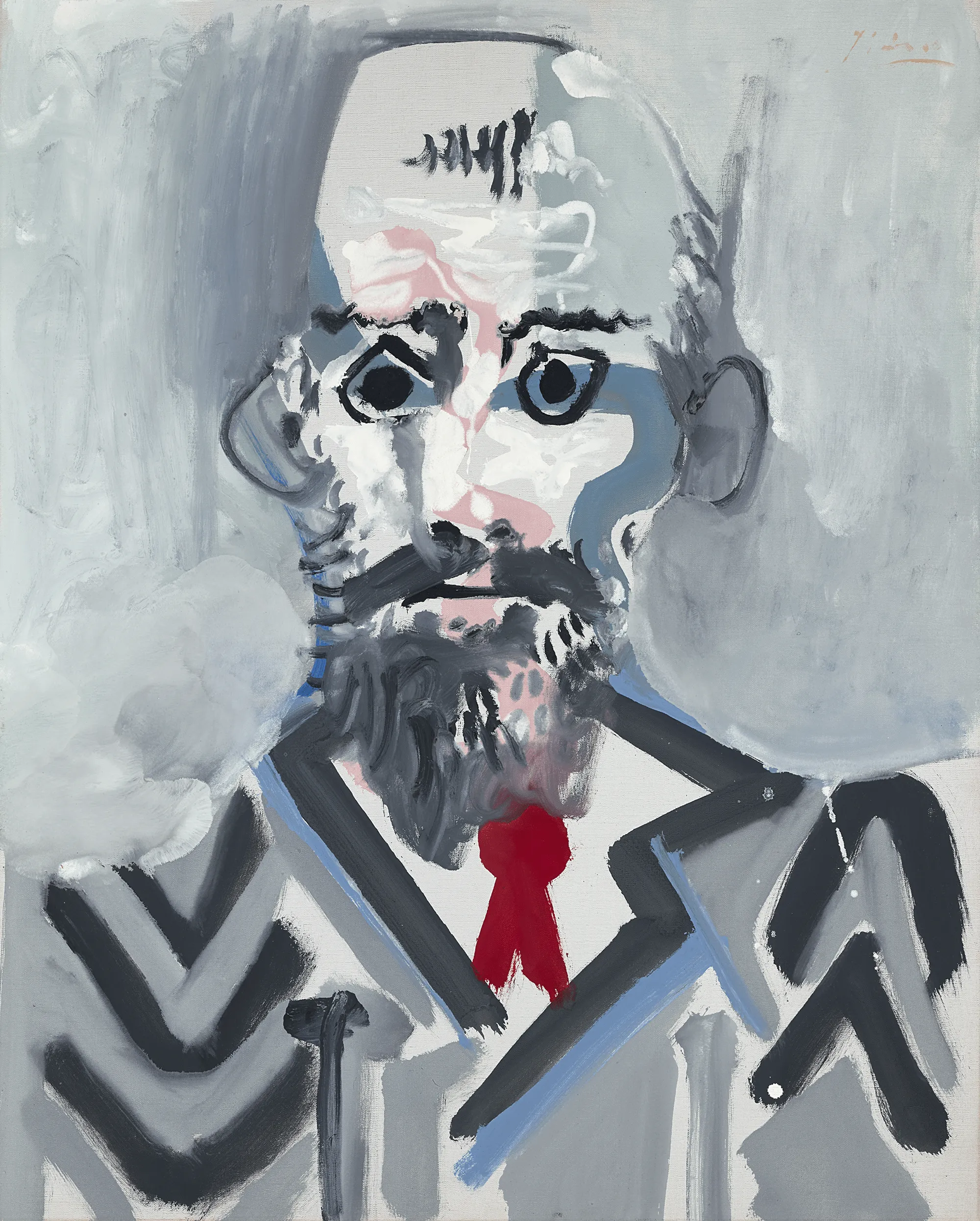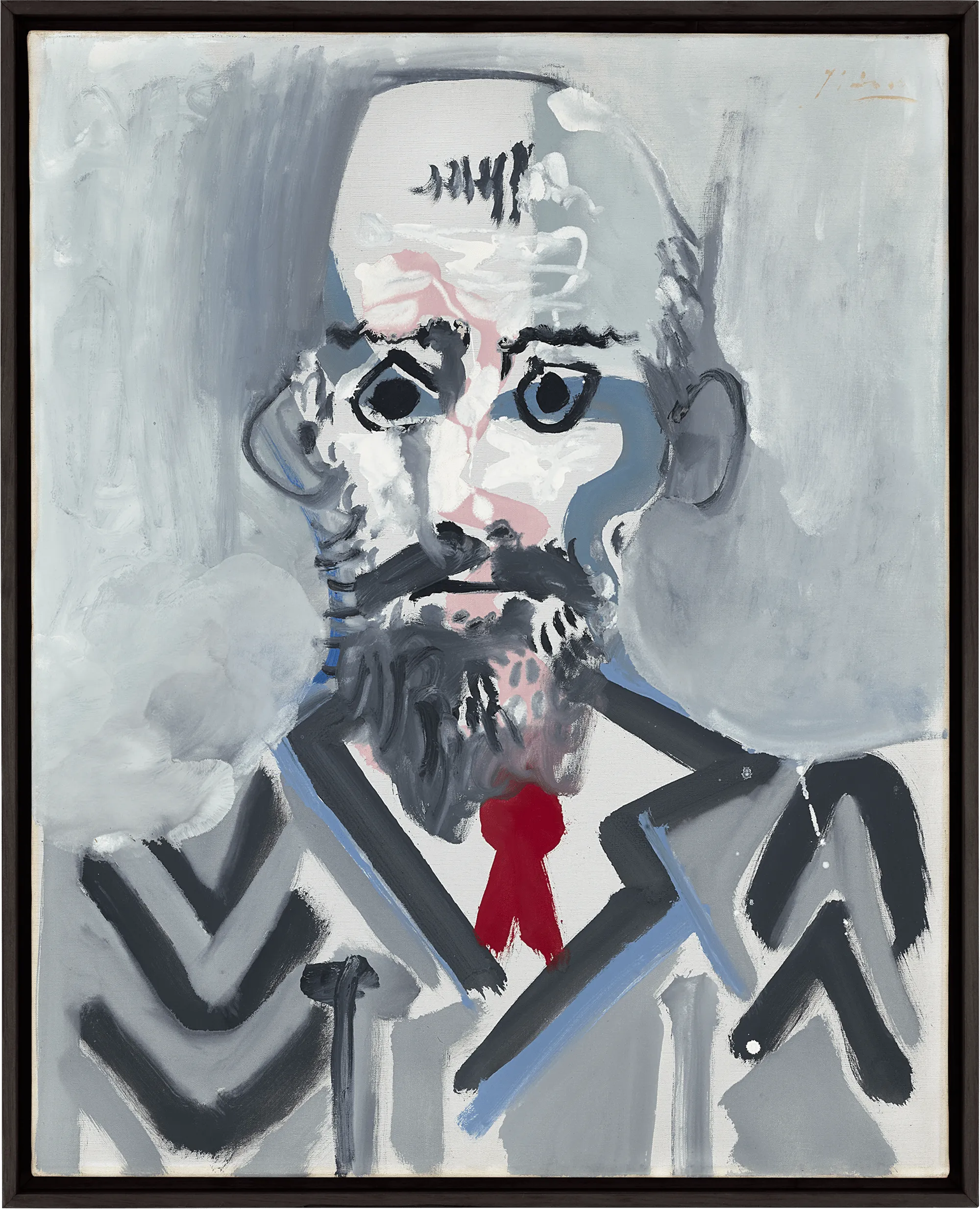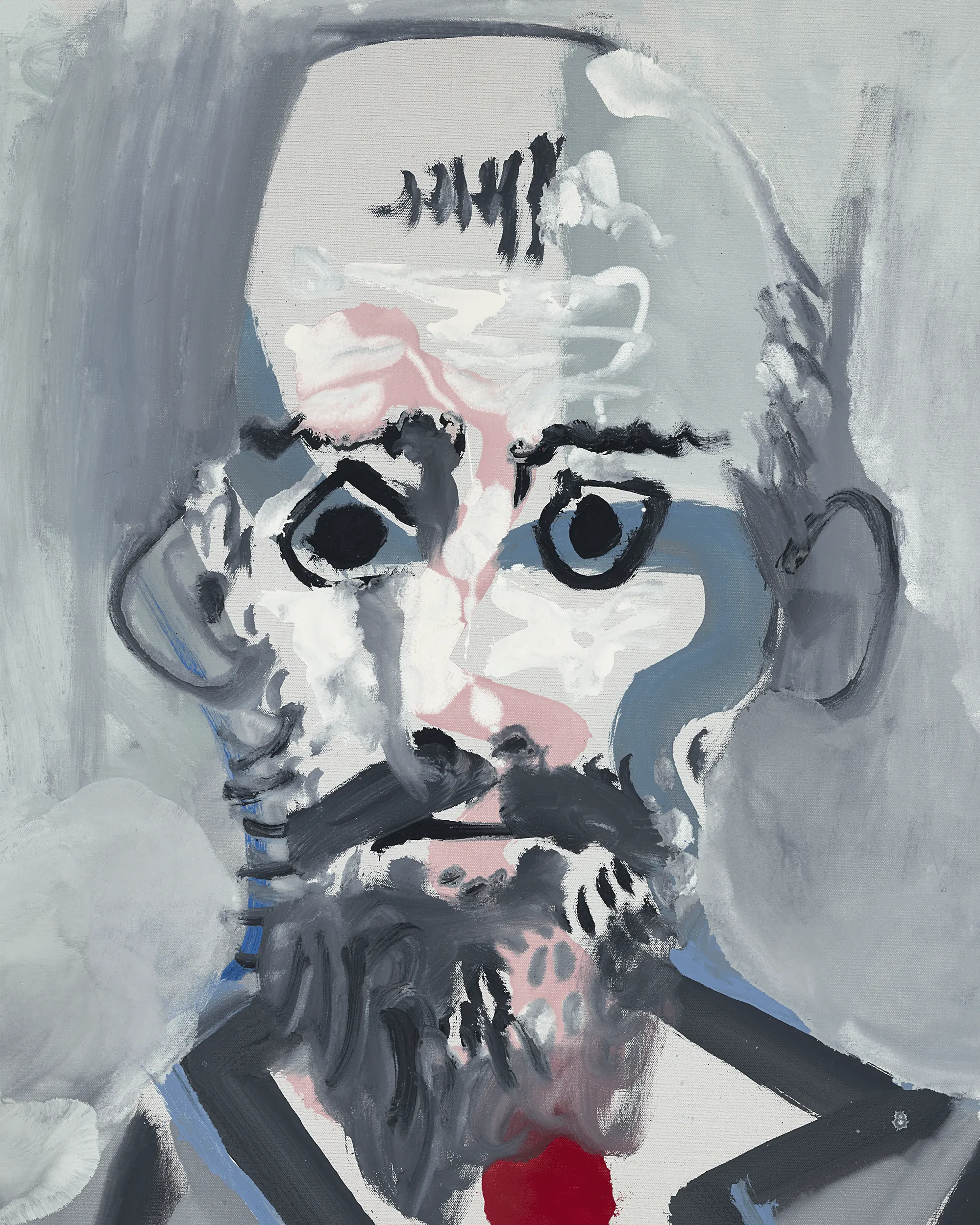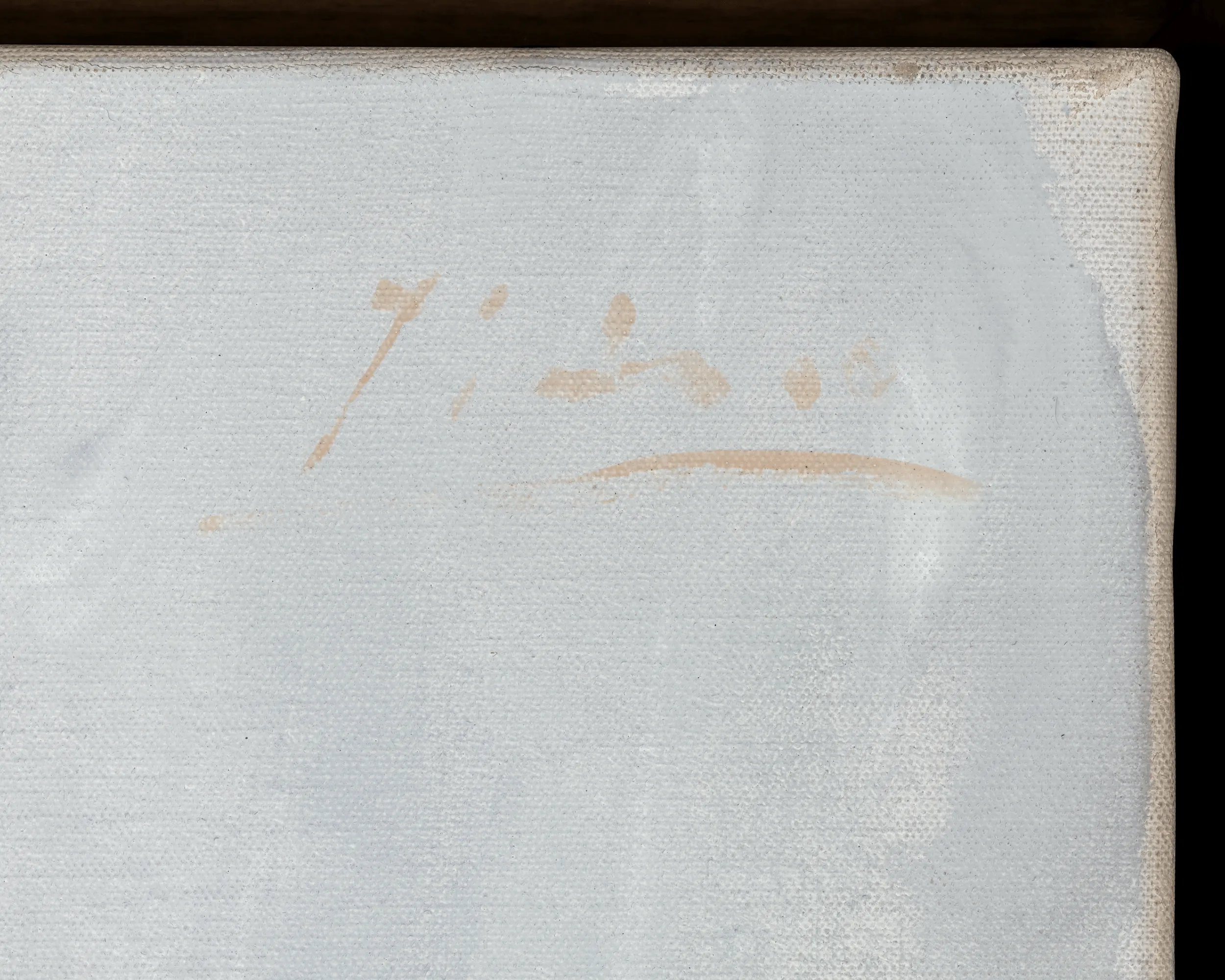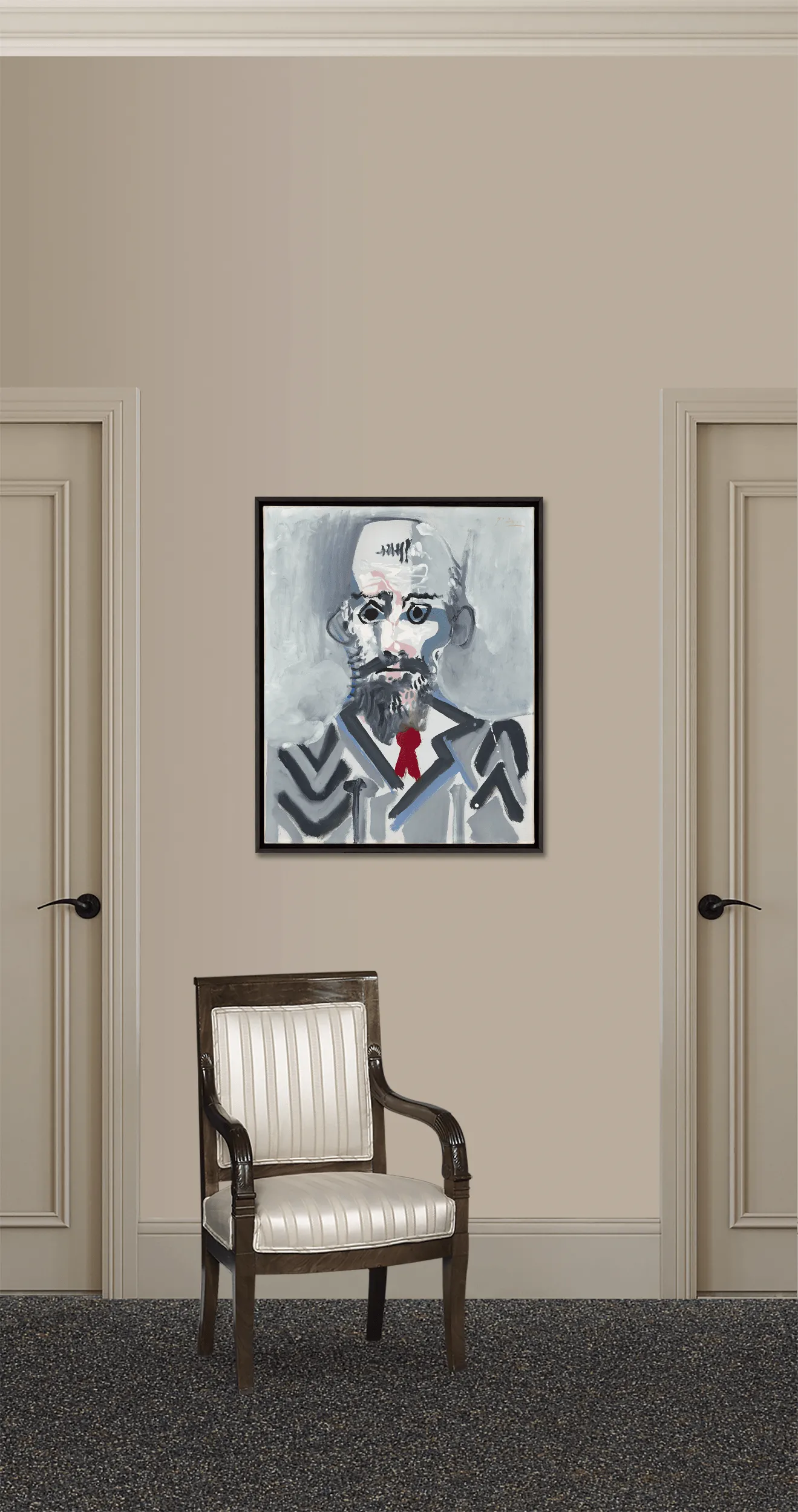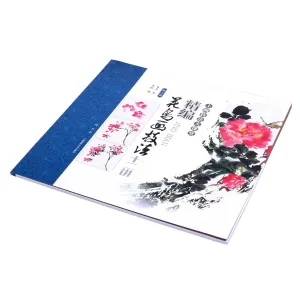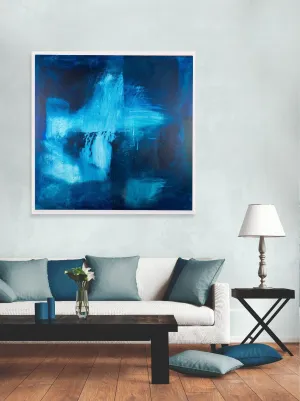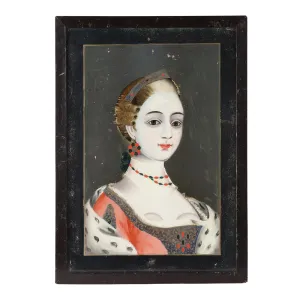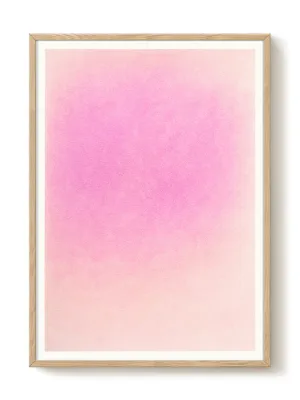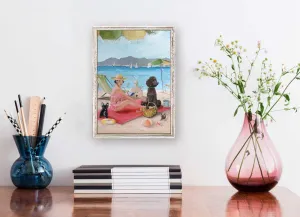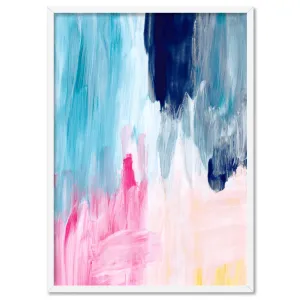Product Details
+
Pablo Picasso
1881-1973 | Spanish
Buste d'homme barbu
(Bust of a Bearded Man)
Signed "Picasso" (upper right) and dated "8.4.65" (en verso)
Oil on canvas
Pablo Picasso and his work transcend art history: they have achieved global celebrity within both academic circles and popular culture. More than any other artist, his ever-evolving, evocative style has come to define modern art of the 20th century, and to this day he continues to gain recognition. The most compelling of his works offer a glimpse into the psyche of the master himself, and the present work can be counted among these. Combining saturated color with a jarring simplicity, Buste d'homme barbu represents an important series of bearded men portraits that the artist composed during the last few years of his life. These works are among the most highly personal and intimate of his career, and they serve as remarkable examples of his mature style with their highly modern expressivity.
Many of Picasso's works from his last years capture the visage of his wife Jacqueline, who was his chief model during this period. In April, however, at his home studio in Mougins, France, Picasso changed direction and produced a series of individual portraits of men. His male subjects derive from various sources. Often they were self-referential portraits; often they referenced his father, Spanish painter José Ruiz y Blasco. Picasso once said, "Every time I draw a man, I find myself thinking of my father… To me a man means 'Don José,' and it will always be so, all my life… He wore a beard… All the men I draw I see more or less with his features."
While his father’s dark mustache and beard are clearly distinguished in Buste d'homme barbu, Picasso's portraits of men from the mid-1960s served more as composite, archetypal figures representing vitality and virility. Although he would live eight more years after this work was created in April of 1965, at the age of 84, Picasso was preoccupied with thoughts of aging and mortality. He was suffering from an ulcer that would require surgery later that year. He seemed to combat these thoughts with a burst of youthful, creative energy, and the mid-1960s witnessed an outpouring of productivity from Picasso, with his subjects such as this displaying that same vitality.
Highly modern and expressionistic, this painting explores an extreme simplification of form, breaking the figure down to its basic essentials. Remarkably, though, Picasso still managed to capture the most expressive features of his subjects in just a few choice brushstrokes. His male portraits from this period employ a particular set of facial traits delineated with decisive swoops of color to suggest a nose or a cheekbone, built up upon fields of white paint. Composed with a highly simplified palette and sparsity of line, Buste d'homme barbu successfully evokes a striking sense of vigor. This character is also endowed with a powerful, hypnotic gaze, the mirada fuerte, that Picasso included in many of his portraits. These wide eyes allude both to ancient portraiture and to the artist himself, who was known personally for his strong gaze, an indication that he has projected himself onto the figure.
Born in 1881 in Málaga, Spain, Picasso spent his childhood studying drawing and painting under his father, Jose Ruíz, who taught at the local art school. Picasso spent a year at the Academy of Arts in Madrid, before traveling to Paris in 1900. Landing in the center of the European art world, Picasso began to mingle in the company of other artists, quickly establishing himself as a critical figure in the thriving Parisian art scene. Critics have often divided Picasso’s artistic output into distinct phases based on his color scheme and style of painting. It was around 1907 that Picasso became very influenced by African masks and art which began making their way into Parisian museums following the expansion of the French Empire into Africa. The faces and simplified, angular planes of the women in Picasso’s Les Demoiselles d’Avignon clearly derive their style from African masks and sculptures, and this painting is often heralded as the beginning of Cubism. Pushing the boundaries of his own creativity throughout his long career, Picasso devoted himself to artistic production. The result was one of the richest and most important oeuvres in art history.
Other examples of late portraits by Picasso reside in important museums worldwide such as
Dated 1965
Canvas: 31 1/2" high x 25 1/2" wide (83.82 x 68.90 cm)
Frame: 33" high x 27 1/8" wide (80.01 x 64.77 cm)
Provenance:
Galerie Louise Leiris, Paris
Private collection
Christie’s New York, November 14, 1990, Impressionist and modern paintings, and sculpture (part 1), lot 47
Private collection
Christie’s New York, May 13, 1998, 20th Century Art, lot 238
Private collection
M.S. Rau, New Orleans
Literature:
Pablo Picasso, Volume 25, 1971, by C. Zervos, p. 57, no. 101 (illustrated)
1881-1973 | Spanish
Buste d'homme barbu
(Bust of a Bearded Man)
Signed "Picasso" (upper right) and dated "8.4.65" (en verso)
Oil on canvas
Pablo Picasso and his work transcend art history: they have achieved global celebrity within both academic circles and popular culture. More than any other artist, his ever-evolving, evocative style has come to define modern art of the 20th century, and to this day he continues to gain recognition. The most compelling of his works offer a glimpse into the psyche of the master himself, and the present work can be counted among these. Combining saturated color with a jarring simplicity, Buste d'homme barbu represents an important series of bearded men portraits that the artist composed during the last few years of his life. These works are among the most highly personal and intimate of his career, and they serve as remarkable examples of his mature style with their highly modern expressivity.
Many of Picasso's works from his last years capture the visage of his wife Jacqueline, who was his chief model during this period. In April, however, at his home studio in Mougins, France, Picasso changed direction and produced a series of individual portraits of men. His male subjects derive from various sources. Often they were self-referential portraits; often they referenced his father, Spanish painter José Ruiz y Blasco. Picasso once said, "Every time I draw a man, I find myself thinking of my father… To me a man means 'Don José,' and it will always be so, all my life… He wore a beard… All the men I draw I see more or less with his features."
While his father’s dark mustache and beard are clearly distinguished in Buste d'homme barbu, Picasso's portraits of men from the mid-1960s served more as composite, archetypal figures representing vitality and virility. Although he would live eight more years after this work was created in April of 1965, at the age of 84, Picasso was preoccupied with thoughts of aging and mortality. He was suffering from an ulcer that would require surgery later that year. He seemed to combat these thoughts with a burst of youthful, creative energy, and the mid-1960s witnessed an outpouring of productivity from Picasso, with his subjects such as this displaying that same vitality.
Highly modern and expressionistic, this painting explores an extreme simplification of form, breaking the figure down to its basic essentials. Remarkably, though, Picasso still managed to capture the most expressive features of his subjects in just a few choice brushstrokes. His male portraits from this period employ a particular set of facial traits delineated with decisive swoops of color to suggest a nose or a cheekbone, built up upon fields of white paint. Composed with a highly simplified palette and sparsity of line, Buste d'homme barbu successfully evokes a striking sense of vigor. This character is also endowed with a powerful, hypnotic gaze, the mirada fuerte, that Picasso included in many of his portraits. These wide eyes allude both to ancient portraiture and to the artist himself, who was known personally for his strong gaze, an indication that he has projected himself onto the figure.
Born in 1881 in Málaga, Spain, Picasso spent his childhood studying drawing and painting under his father, Jose Ruíz, who taught at the local art school. Picasso spent a year at the Academy of Arts in Madrid, before traveling to Paris in 1900. Landing in the center of the European art world, Picasso began to mingle in the company of other artists, quickly establishing himself as a critical figure in the thriving Parisian art scene. Critics have often divided Picasso’s artistic output into distinct phases based on his color scheme and style of painting. It was around 1907 that Picasso became very influenced by African masks and art which began making their way into Parisian museums following the expansion of the French Empire into Africa. The faces and simplified, angular planes of the women in Picasso’s Les Demoiselles d’Avignon clearly derive their style from African masks and sculptures, and this painting is often heralded as the beginning of Cubism. Pushing the boundaries of his own creativity throughout his long career, Picasso devoted himself to artistic production. The result was one of the richest and most important oeuvres in art history.
Other examples of late portraits by Picasso reside in important museums worldwide such as
Dated 1965
Canvas: 31 1/2" high x 25 1/2" wide (83.82 x 68.90 cm)
Frame: 33" high x 27 1/8" wide (80.01 x 64.77 cm)
Provenance:
Galerie Louise Leiris, Paris
Private collection
Christie’s New York, November 14, 1990, Impressionist and modern paintings, and sculpture (part 1), lot 47
Private collection
Christie’s New York, May 13, 1998, 20th Century Art, lot 238
Private collection
M.S. Rau, New Orleans
Literature:
Pablo Picasso, Volume 25, 1971, by C. Zervos, p. 57, no. 101 (illustrated)




